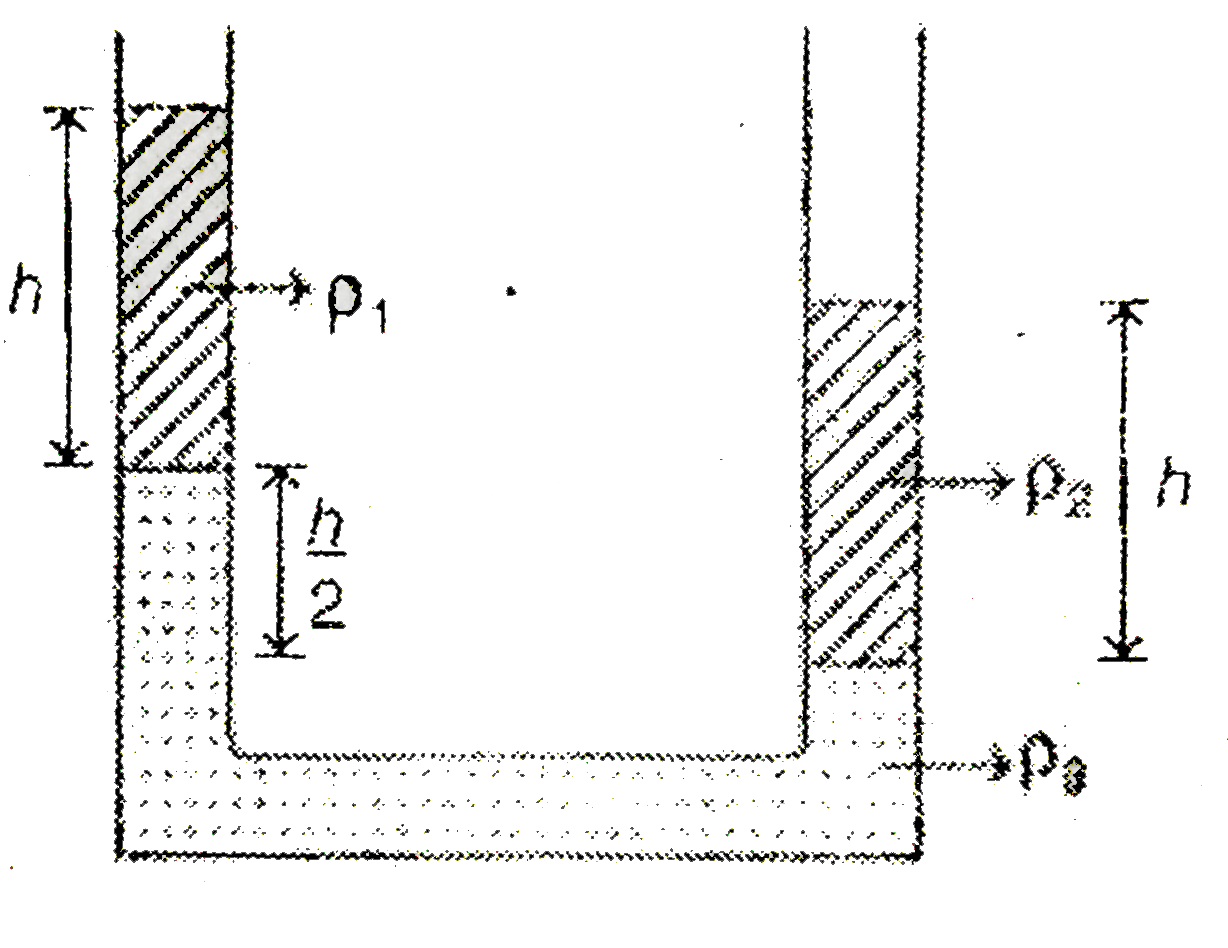Three liquids of equal masses are taken in three identical cubical vessels A,B and C. Their densities are and respectively but . The force exerted by the liquid on the base of the cubical vessel is
Maximum in vessel C
Minimum in vessel C
The same in all the vessels
Maximum in vessel A
The correct Answer is:C
Force
Topper's Solved these Questions
- FLUID MECHANICSBook:ERRORLESSChapter:FLUID MECHANICSExercise:NCERT BASED QUESTIONS(PASCAL.S LAW AND ARCHIMEDES PRINCIPLE)
Explore 23 Videos
- FLUID MECHANICSBook:ERRORLESSChapter:FLUID MECHANICSExercise:NCERT BASED QUESTIONS(FLUID FLOW)
Explore 51 Videos
- ELASTICITYBook:ERRORLESSChapter:ELASTICITYExercise:ASSERTION & REASON
Explore 10 Videos
- FRICTION Book:ERRORLESSChapter:FRICTION Exercise:ASSERTION & REASON
Explore 8 Videos
Similar Questions
Equal mass of three liquids are kept in three identical cuylindricasl vessels A, B and C. the densities are ρA,ρB,ρCwithρA<ρB<ρC. The force on the base will be
View SolutionA solid uniform ball having volume V and density ρ floats at the interface of two unmixible liquids as shown in Fig. 7(CF).7. The densities of the upper and lower liquids are ρ1 and ρ2 respectively, such that ρ1<ρ<ρ2. What fractio9n of the volume of the ball will be in the lower liquid.

View Solution
Knowledge Check
Three liquids of equal masses are taken in three identical cubical vessels A, B and C. Their densities are ρA,ρB and ρC respectively but ρA<ρB<ρC. The force exerted by the liquid on the base of the cubical vessel is
Amaximum in vessel CBminimum in vessel CCthe same in all the vesselsDmaximum in vessel AThree different liquids are filled in a U-tube as shown in figure. Their densities are ρ1,ρ2 and ρ3 respectively. From the figure we may conclude that
 Aρ2>ρ1Bρ1>ρ2Cρ3=2(ρ2−ρ1)Dρ3=ρ2+ρ12
Aρ2>ρ1Bρ1>ρ2Cρ3=2(ρ2−ρ1)Dρ3=ρ2+ρ12A solid uniform ball having volume V and density ρ floats at the interface of two unmixable liquids as shown in the figure. The densities of the upper and the lower liquids are ρ1 and ρ2 respectively, such that ρ1<ρ<ρ2 . What fraction of the volume of the ball will be in the lower liquid ?
 Aρ−ρ2ρ1−ρ2Bρρ1−ρ2Cρ1−ρρ1−ρ2Dρ1−ρ2ρ2
Aρ−ρ2ρ1−ρ2Bρρ1−ρ2Cρ1−ρρ1−ρ2Dρ1−ρ2ρ2
Three identical vessels are filled with equal masses of three different liquids A,B and C(ρA>ρB>ρC). The pressure at the base will be
View SolutionThree identical vessels are filled to the same height with three different liquids A, B and C(ρA>ρB>ρC). The pressure at the base will be
View SolutionTwo circular discs A and B have equal masses and uniform thickness but have densities ρ1 and ρ2 such that ρ1>ρ2 . Their moments of inertia is
View SolutionA solid sphere having volume V and density ρ floats at the interface of two immiscible liquids of densityes ρ1 and ρ2 respectively. If ρ1<ρ<ρ2, then the ratio of volume of the parts of the sphere in upper and lower liquid is
View SolutionThree liquids of densities ρ1,ρ2 and ρ3 (with ρ1>ρ2>ρ3), having the same value of surface tension T, rise to the same height in three identical capillaries. The angles of contact θ1,θ2 and θ3 obey
View Solution